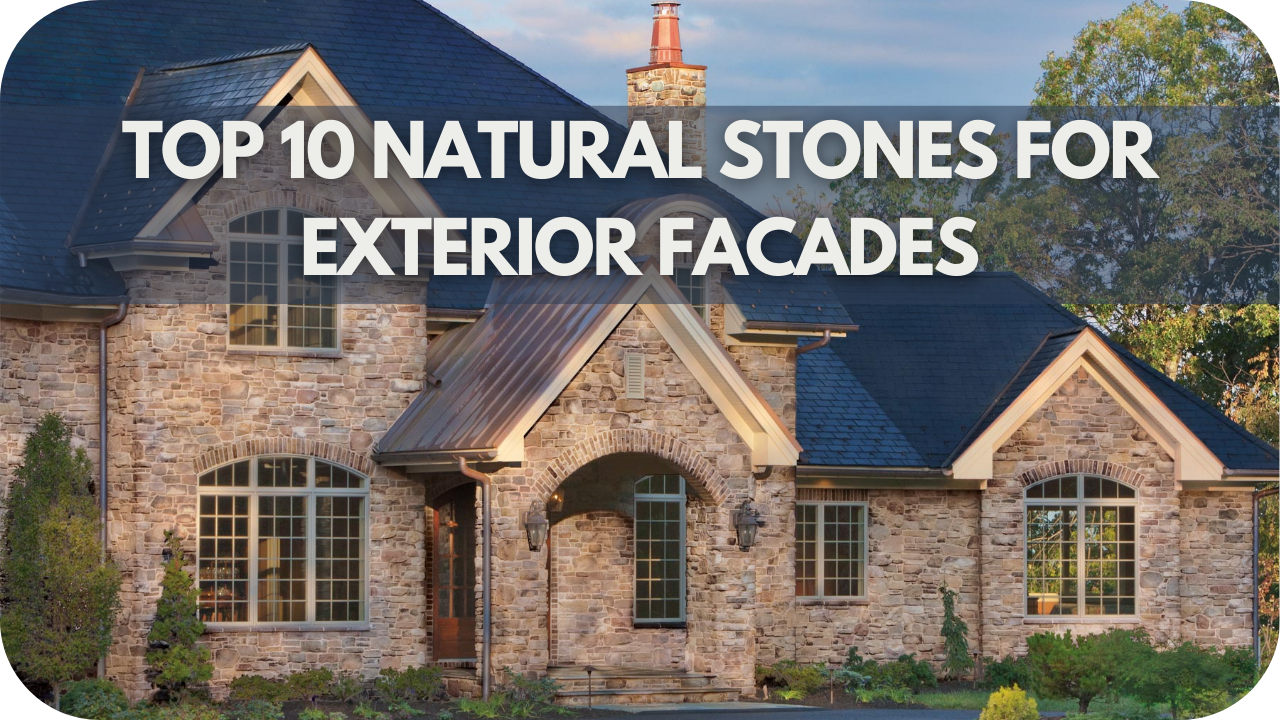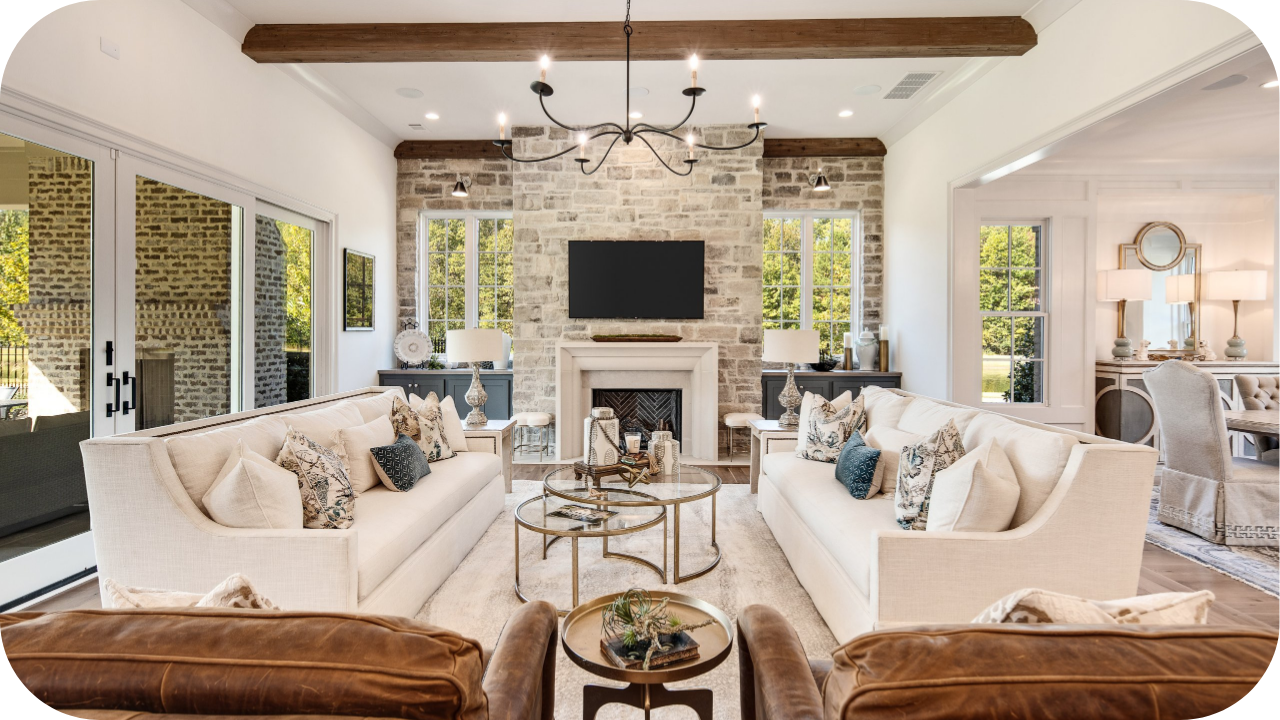
When I set out to design an exterior facade, finding a material that combined durability with natural beauty was key.
Natural stone quickly became the top choice, offering timeless appeal and the resilience I needed. Each stone, from the ruggedness of slate to the elegance of marble, had something unique to add.
In this guide, I’ll share my top 10 natural stones for facades, each bringing lasting strength and a refined touch to any architectural style.
Let’s dive in!
1. Limestone
Limestone is most preferred and has long been favoured for exterior facades as it offers a combination of strength and elegance that withstands the test of time. Known for its natural warmth and soft, muted tones, limestone adds a classic touch to traditional and modern architecture.
The stone’s durability allows it to endure weathering, making it highly suitable for various climates. With a surface that can be finished in multiple textures, from smooth honed to rugged split face, limestone provides versatility in design.
Additionally, it requires minimal maintenance, naturally resisting decay and erosion over decades. Over time, limestone can develop a patina that enhances character and blends seamlessly into natural surroundings.
Limestone is an eco-friendly option that’s often locally sourced, reducing the environmental impact associated with transportation. It offers an elegant yet practical solution for facades, creating a sophisticated look that remains beautiful year after year.
Check out this Limestone 101 masterpiece I published to learn more about this natural stone, its use, and why limestone is the top choice for walling stone.
2. Porphyry
Porphyry is a striking choice for exterior facades, prized for its durability and unique appearance.
Known for its rich, earthy tones, which range from deep reds to subtle greys, porphyry adds a natural warmth to building exteriors. Each stone piece features distinct patterns and textures, which lend character and visual interest to facade designs.
This natural stone is highly resistant to weathering. It performs well under harsh environmental conditions, maintaining its integrity and colour over time.
Often used in high-traffic areas, this stone handles wear effortlessly, further showcasing its resilience. The naturally textured surface also provides an anti-slip quality, making it ideal for facade areas near entrances or pathways.
With minimal maintenance, porphyry retains its appearance and structural soundness with little upkeep.
3. Granite
Granite has earned its place as a top choice for exterior facades. It is known for its unmatched strength and resilience. As one of the hardest natural stones, it easily withstands harsh weather, heavy impact, and daily wear.
Its bold, speckled appearance, available in various colours from classic grey to striking black, adds a distinctive touch to any building exterior. Granite is highly resistant to fading and scratching and maintains its polished look over time, even in challenging environments.
This stone’s density ensures it resists moisture, reducing the risk of erosion or damage. With options for both polished and textured finishes, granite allows for flexibility in facade design, adapting to both contemporary and traditional styles. Though granite requires a higher initial investment, its low maintenance needs and longevity provide great value.
4. Bluestone
Bluestone brings a sleek, contemporary look to exterior facades. It is valued for its durability and unique aesthetic. Its cool, blue-grey tones offer a modern edge, complementing various architectural styles, from minimalist to industrial.
Bluestone is highly weather resistant and holds up well under fluctuating temperatures, rain, and wind, making it ideal for outdoor use. The stone’s dense composition also provides excellent resilience against chipping or cracking, ensuring a long-lasting facade.
Bluestone’s naturally slip-resistant surface makes it a practical choice for facades near entryways or high-traffic areas. Available in honed, sawn, or natural finishes, it allows for customisation, enhancing its visual appeal and functionality.
5. Travertine
Travertine stands out for its classic beauty and natural warmth, making it a popular choice for exterior facades.
With soft, earthy tones ranging from beige to rich brown, travertine brings a welcoming, timeless appeal to any building design. Known for its distinctive, porous surface, this stone provides a textured look that adds character and depth.
Wondering why Travertine is the right choice for the kind of exterior projects?
Well, its durability makes it suitable for exterior use.
It handles weather changes and wear with minimal maintenance. When properly sealed, travertine resists moisture, preserving its appearance and structural integrity.
Available in finishes from polished to tumbled, this stone offers a range of customisation options to suit different architectural styles. Its natural composition and earthy appeal allow travertine to blend seamlessly with outdoor landscapes, enhancing the connection between the building and its surroundings.
6. Marble
Marble offers luxury and refinement, making it a distinguished choice for exterior facades.
Renowned for its rich veining and wide range of colours, marble brings sophistication to any architectural style. Its polished surface creates a smooth, elegant finish that enhances the building’s aesthetic.
Though often associated with interiors, marble’s durability allows it to perform well on facades. When properly maintained, this stone stands up to weather and time. This stone naturally resists extreme temperatures, which helps preserve its structural integrity in varying climates.
Available in hues from crisp whites to deep blacks, marble provides options that complement both modern and traditional designs. With occasional sealing, it retains its polished look and resists moisture effectively, reducing maintenance needs.
7. Quartzite
Quartzite is celebrated for its extraordinary strength, making it an ideal choice for exterior facades that require resilience.
Known for its hardness and durability, quartzite withstands harsh weather conditions and resists scratching, chipping, and fading over time. This natural stone offers a subtle yet elegant appearance, with soft hues ranging from white and grey to more earthy tones, often laced with delicate veining.
Quartzite is highly resistant to moisture absorption and maintains its structural integrity, even in humid or rainy climates. Available in various finishes, from polished to honed, quartzite adapts easily to different architectural styles, bringing a refined touch to modern and traditional designs.
With minimal maintenance required, this stone retains its beauty with ease, reducing the need for ongoing treatments.
8. Sandstone
Sandstone brings an earthy warmth to exterior facades, making it a popular choice for adding character and charm. Known for its natural, rustic texture, sandstone lends a timeless appeal to modern and traditional architecture.
Its warm tones, from soft beige to rich terracotta, create a welcoming look that complements outdoor landscapes. Sandstone’s durability ensures it holds up well in various weather conditions, though regular sealing can enhance its resistance to moisture.
The stone’s relatively light weight makes it easy to work with, allowing for creative applications in facade designs. Available in finishes from smooth to rough-hewn, sandstone provides flexibility for achieving different aesthetic effects. Over time, this stone develops a natural patina, blending even more harmoniously with its surroundings.
9. Cobblestone
Cobblestone brings a rustic charm to exterior facades, offering a timeless look that evokes classic architecture. Known for its rounded, weathered appearance, cobblestone adds texture and depth to building exteriors, creating a distinctive, old-world appeal.
Its natural durability makes it resistant to wear, ensuring that facades retain their strength and look over time. Made from hard-wearing stones like granite or basalt, cobblestone withstands various weather conditions, from intense sun to heavy rain.
Each stone, unique in shape and size, contributes to a facade rich with visual interest and character. Cobblestone requires minimal maintenance, making it a practical choice for busy homeowners or commercial properties. It is often used in historic restorations and suits contemporary projects aiming to blend tradition and modernity.
Find out Why Contractors Choose Cobblestone for Outdoor Projects
10. Quartz
Quartz offers a refined, contemporary look for exterior facades, ideal for designs that call for a sleek, uniform appearance.
Engineered from natural quartz crystals combined with resins, quartz surfaces deliver exceptional durability and a polished finish that holds up well over time. Known for its wide range of colour options, quartz can be tailored to suit various architectural styles, from minimalist to industrial.
Its non-porous nature helps it resist moisture, reducing water damage or staining concerns in exposed areas. Although not as UV-resistant as natural stones, quartz can still perform well in shaded or semi-protected facades, maintaining its smooth surface with minimal maintenance.
The ease of cleaning (check out the top 6 tips for cleaning and maintaining Quartz stones) and overall durability make it a practical choice for those seeking low upkeep without sacrificing style.
With quartz, building facades gain a sophisticated, modern aesthetic that remains appealing and resilient in the right conditions.
Conclusion
Selecting the ideal natural stone can bring both beauty and strength to any exterior facade.
Each stone in our top 10 list offers distinct advantages to suit different architectural visions. Interested in finding the perfect fit for your project?
Contact us today to explore options that blend style, durability, and timeless appeal.
More To Explore

Stone Accents: Adding Charm to Modern Interiors with Natural Stone
Modern interiors seek a balance of style, durability, and uniqueness. Natural stone accents are a game-changer, adding timeless elegance and character to any space. As

Natural Stone Features That Will Transform Your Living Room
Natural stone elevates any living room with elegance, texture, and timeless appeal. Its versatility allows it to enhance both modern and traditional spaces. From stone


